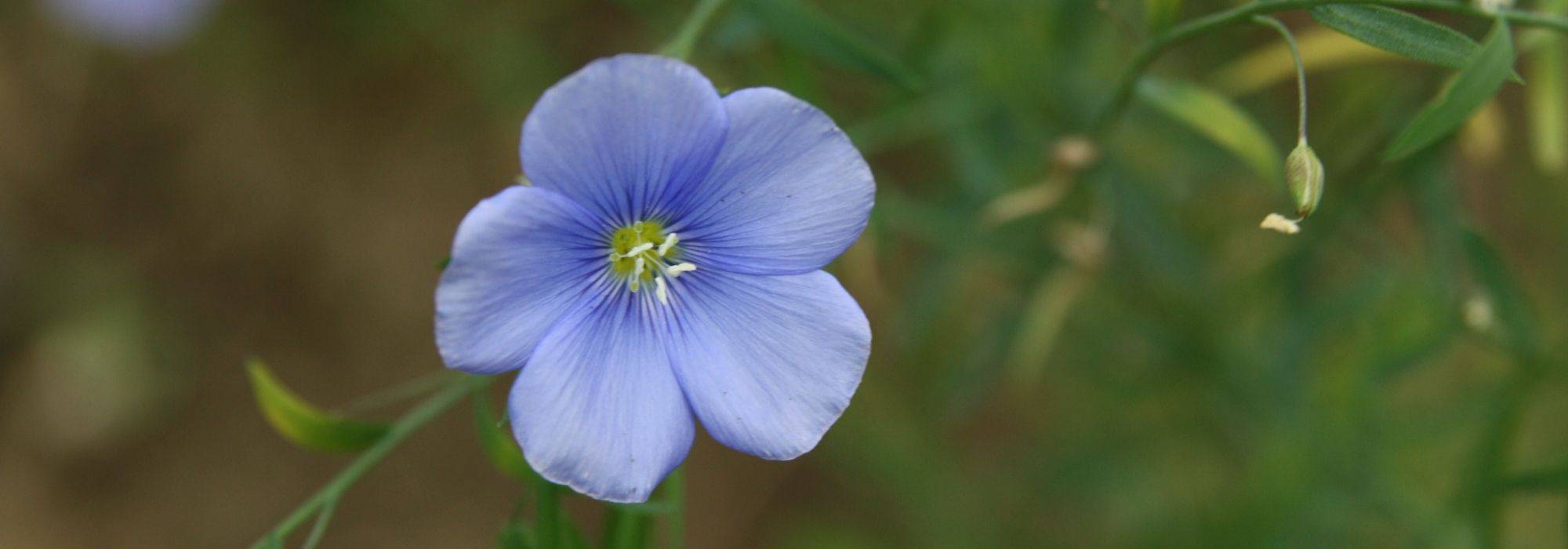
Flax, Linum: planting, sowing and care
Summary
Flax in a nutshell
- Flax offers light, abundant flowering from May to August and self-seeds easily from year to year
- Its pretty small single flowers, often pale blue, also occur in red, white or yellow and keep appearing throughout summer
- Cultivated for centuries for its fibres, edible seeds and oil
- Easy and undemanding, it grows in full sun in well-drained, light, dry soils
- One of the easiest annual or perennial plants to grow in sunny borders, suitable for all cottage and wild-style settings
A word from our expert
Cultivated flax, Linum usitatissimum, is a plant grown mainly for its fibres, from which textile is made, and for its seeds and oil with many benefits. As for the flax flower, it is also edible and attractive as a salad garnish! Flax cultivation in France is widespread and it is not uncommon to see flax fields in flower stretching as far as the eye can see, lighting up the countryside in summer with their sky-blue colour!
But flax is also a lovely, valuable flower for creating flowering cushions in gardens! There are other species of flax, plant cousins of the wild flax of our meadows, offering flowering displays of an equally intense blue, as well as red, pink or white. Flax is an essential flower in natural and wild gardens and in dry gardens, where its bucolic charm helps lighten summer flower beds, abundant mixed-borders, dry rockeries and naturalistic meadows.
It also has many ecological advantages; undemanding in fertiliser, flax is a very useful plant in the vegetable garden: sowing flax with potatoes repels Colorado potato beetles!
Easy and undemanding, flax grows in sun in all well-drained soils, even calcareous and stony ones.
From annual flax to perennial flax, discover among our collections the different species of flax we offer and our advice for flax cultivation, on how to sow flax successfully in the garden, harvest flax seeds or its many uses.
Description and botany
Botanical data sheet
- Latin name Linum
- Family Linaceae
- Common names Flax
- Flowering May to August
- Height 0.20 to 1 m
- Sun exposure sun
- Soil type any well-drained soil
- Hardiness variable depending on species
Flax or Linum is a herbaceous perennial plant or annual depending on species, of the family Linaceae, native to temperate and subtropical regions of northern hemisphere: Europe, temperate Asia and North Africa. Genus includes more than 180 species among which some are perennial, others annual or biennial with flowering ranging from blue to white, and also yellow or red.
Linum usitatissimum, “Common flax” or “fiber flax” is the annual species most cultivated by textile industry for its exceptionally strong natural fibres, and also by food industry for its seeds rich in omega-3 that produce famous linseed oil. In ornamental gardening, do not confuse it with perennial flax, also blue, Linum perenne also called Linum sibiricum or “blue perennial flax”. Also encountered is Linum flavum with yellow flowers, a less common perennial species.
Linum grandiflorum or “large-flowered flax” is another annual species, often producing scarlet or pink blooms and has given rise to some interesting varieties. These are short-lived hardy perennials, often grown as biennials, but they self-seed easily.
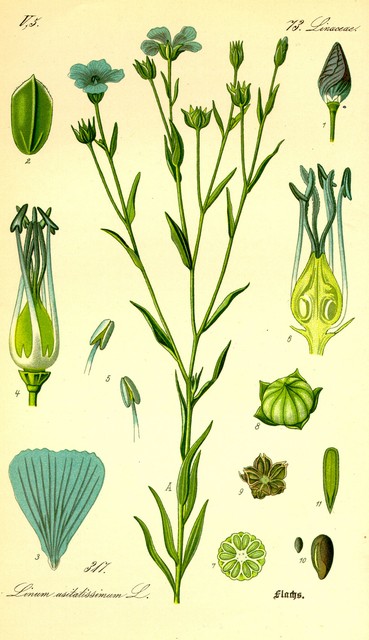
Linum usitatissimum – botanical illustration
Flax quickly forms a bushy clump of erect stems, with a narrow habit, reaching up to 1 m high and 15 to 30 cm wide.
Thin, very fine stems ramified at the base bear alternate leaves 1 to 3 cm long, linear, narrow and lanceolate with one or several parallel veins. Mid-green in colour, green-silver to bluish glaucous, this fine foliage is evergreen on perennials, remaining attractive even in winter.
From spring to autumn depending on climate, flax offers a generous flowering of countless small solitary flowers of great intensity, grouped in axillary or terminal panicles forming more or less loose clusters.
Held on a long erect peduncle, flowers are simple, 2 to 4 cm in diameter and are formed of 5 denticulate petals, the centre sometimes marked with a darker halo. These finely veined corollas open as very bright or satin-like flared cups.
While flax flowers display sumptuous shades of blue from sky blue (Linum perenne) to ultramarine and indigo, they also come in ivory white (‘Bright Eyes’), yellow (Linum flavum), crimson red (Linum grandiflorum ‘Rubrum’) or salmon pink (Linum grandiflorum ‘Charmer Salmon’).
Flax flowering is as ephemeral as poppy flowering, its delicate flowers fading by end of day, scorched by burning sun or carried off by wind. Briefness is compensated by continuous renewal throughout summer.
Melliferous and swaying at slightest breeze, flax flowers are much visited by pollinating insects.
After flowering, they give way to small bell-shaped capsules containing about ten edible seeds, light brown, shiny and flat with a mild hazelnut flavour, and able to self-seed in the garden.
While most tender flaxes are grown as annuals in our climates, perennial species are hardy down to -15 °C.

Several colours: Linum grandiflorum, Linum perenne, Linum grandiflorum ‘Charmer Salmon’ and Linum perenne ‘Diamant’
Easy to grow, flax proves very floriferous provided it is planted in full sun and tolerates all light soils, even poor ones, as long as they are well drained. It does well in dry, stony ground, not fearing summer drought but disliking humidity and heavy soils.
Whether annual or perennial, flax is indispensable for creating pretty flowering cushions in dry gardens, flower meadows, sunny rockeries, bed borders, maintenance-free beds as well as in pots or hanging baskets where it quickly brings a countryside, natural and luminous touch, adding relief and lightness.
Flax is probably humanity’s oldest textile, already widely cultivated 7,000 years ago for its natural fibres used for fabrics and ropes. These fibres are still used today to make sturdy, natural-looking canvases. Flax or cultivated flax (Linum usitatissimum) is widely sown in France, mainly in Brittany, Flanders and northern regions.
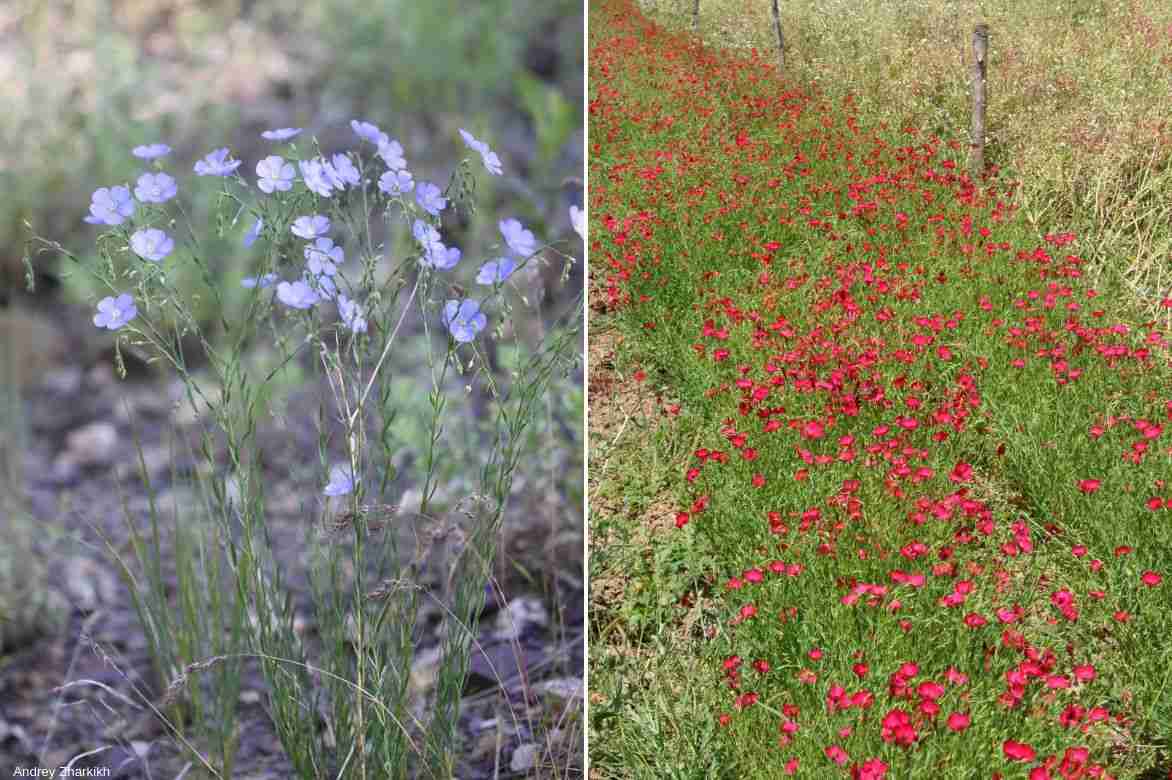
Linum perenne & Linum grandiflorum, indispensable in flower meadows or maintenance-free beds
Flax also has therapeutic virtues recognised for thousands of years, notably to combat excess cholesterol or menopausal disorders.
Flax seeds are still consumed today and are particularly rich in omega-3 and omega-6. They are used dried or sprouted to enhance bread or salads, or pressed to obtain linseed oil used in cosmetics, food or industrial applications such as oil paints.
Finally, flax stems reduced to shavings are valuable as garden mulch.
You may also read
How to sow annual seeds: directly in the ground or in trays?Main species and varieties
If the most cultivated flax is Linum usitatissimum, an annual species with blue flowers prized for its textile fibres and whose seeds also yield linseed oil, it must not be confused with perennial flax or Linum perenne, also blue, which brightens our gardens. Among the 200 flax species, there are perennials such as yellow flax (Linum flavum), Linum narbonense, also called “Narbonne flax”, annuals such as red flax (Linum grandiflorum), which declinates into cultivars with large blue, red, pink or white flowers, and biennials, both of which readily self-seed in the garden.
Most popular
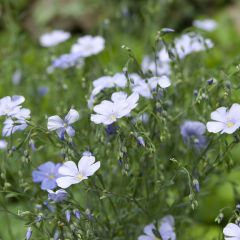
Linum perenne - Blue Perennial Flax Seeds
- Flowering time july to october
- Height at maturity 50 cm
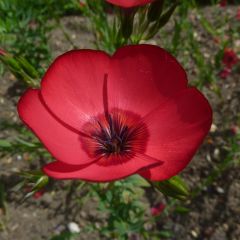
Scarlet Flax Seeds - Linum grandiflorum Rubrum
- Flowering time july to october
- Height at maturity 40 cm
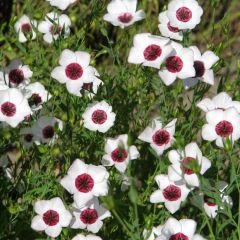
Linum grandiflorum Bright Eyes - Annual Flowering Flax Seeds
- Flowering time august to october
- Height at maturity 40 cm
Our favourites
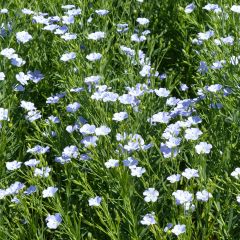
Linum Blue Dress - Flax seeds
- Flowering time july to october
- Height at maturity 50 cm
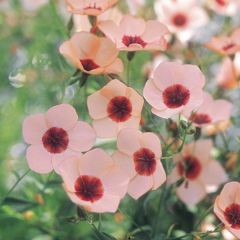
Linum grandiflorum Charmer Salmon - Flax seeds
- Flowering time july to october
- Height at maturity 50 cm
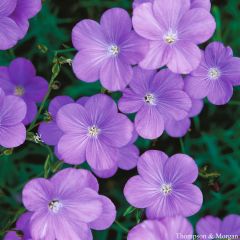
Linum narbonense Heavenly Blue Seeds - Perennial Flax
- Flowering time june to august
- Height at maturity 40 cm
Discover other Linus - Ornamental Flax
View All →Available in 2 sizes
Available in 1 sizes
Available in 1 sizes
Available in 1 sizes
Planting
Where to plant flax?
Perennial flax offers good hardiness (-15°C), perfectly frost-resistant and tolerating summer drought well. Other flax species such as Linum grandiflorum are sensitive to severe cold and are grown as annuals in open ground or in pots in our climate. Annual or perennial flax prefers dry, sunny sites and is very easy to grow across France: it even adapts to coastal conditions.
Flax needs a very sunny position to flower abundantly. It likes any well-drained soil, even poor soils and dislikes waterlogged ground, preferring permeable, stony, dry soils.
Flax is gladly planted in groups to create seas of blue, pink, yellow or red flowers or low-maintenance colourful clumps in all dry gardens, naturalistic or romantic styles, in country-inspired beds, in flowering meadow, in flowerbeds, in borders and dry rockeries, to edge a path with lightness, in hanging baskets and pots.
Flax chippings are useful for lightening heavy soils in the vegetable garden where flax is also used as a green manure, occupying soil between two crops.
When and how to plant flax?
Plant perennial flax in light, well-drained soil from our bucket-grown plants in spring from March to April or from September to November, avoiding severe frosts.
How to plant flax?
In open ground
Allow 3 to 4 bucket-grown flax plants per m² and space plants 30 cm apart for a strong massed colour effect. In heavy soil, add gravel or sand to improve drainage, as excess water in summer or winter would be fatal. Good garden soil will do provided it is well drained.
- Loosen soil deeply
- Dig a hole twice the volume of the bucket
- Plant in a mix of sand and potting compost
- Backfill with soil
- Firm gently
- Water to encourage rooting
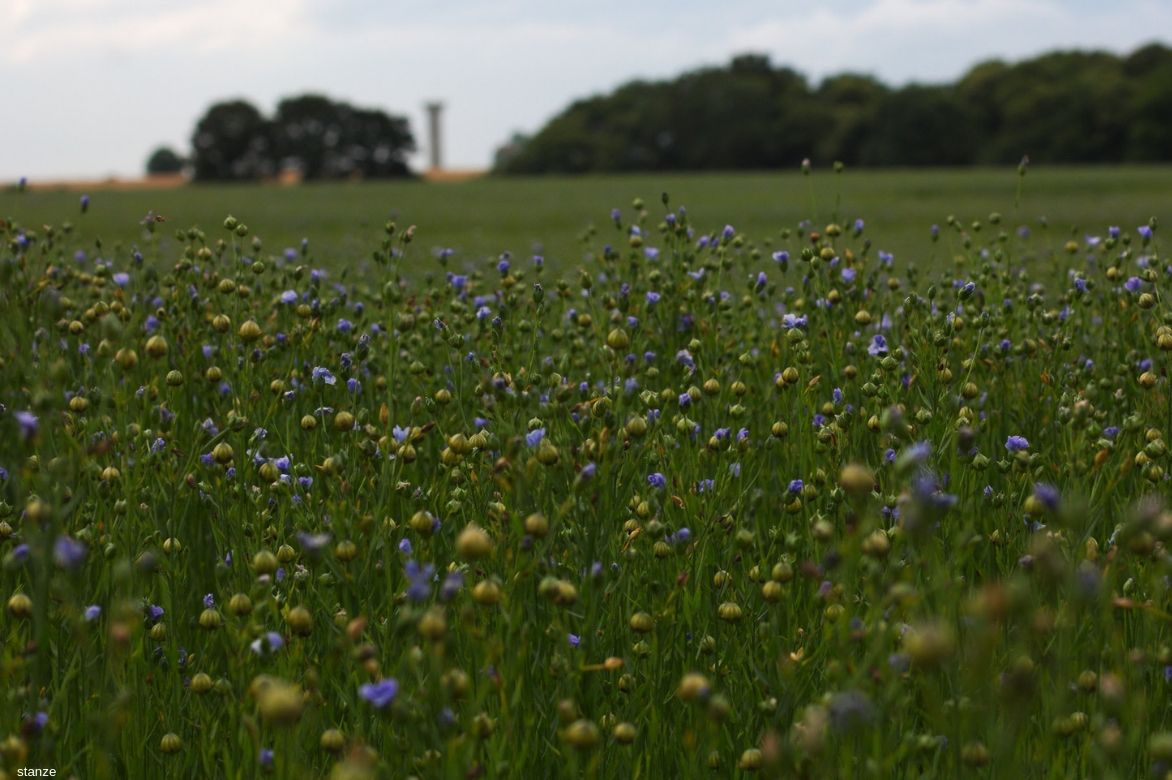
In containers
Plant flax in a rich, well-drained mix and in a container at least 30 cm deep.
- Cover bottom of container with gravel or clay pebbles
- Plant in a mix of potting compost, garden soil and gravel or river sand
- Backfill and firm
- Water
- Place in sun
You may also read
Thinning of sowingsWhen and how to sow flax seeds?
In ground
Sow flax seeds directly in place from March in mild areas, until May in colder areas for flowering from June to September.
- Sow thinly in furrows 3 mm deep in well-tilled, lightened soil
- Cover with a fine layer of seed compost
- Firm down
- Water regularly and keep soil moist until emergence, which takes about 20 days
- Thin out every 15 to 30 cm
In seed tray under cover
You can also sow flax seeds in buckets or in a seed tray, at a temperature of 18–23°C, from August to September for flowering the following summer.
- Sow flax seeds on surface of a good seed compost
- Keep warm between 18 and 23°C
- Cover seeds lightly with compost and keep in light
- Water regularly with a fine spray until emergence generally takes about 20 days
- When young plants have formed 2 or 3 leaves, pot them on into buckets
- Keep them sheltered in a frost-free place
- Pot them out the following spring into soil, in pots or window boxes after last frosts
Follow our tips to succeed with annual seed sowing!
Maintenance, pruning and care
Flax requires little care and is ideal in low-maintenance gardens. Watering should not be excessive because plant is sensitive to excess moisture: only water during prolonged drought, as flax tolerates high temperatures well. Potted flax and annual species will need more regular watering but without waterlogging the soil.
Flax is an undemanding plant that does not need fertiliser.
After flowering, cut back clumps of perennial flax to soil level.
Let flowers of annual flax set seed to encourage self-sowing or to harvest seeds: pull up annual flax just after flowering if you do not want them to naturalise.
When to harvest flax seeds?
In July, flax stems begin to dry and turn brown. Flax seeds are at ripeness when they ‘rattle’ as you shake the capsules: detach and pinch dry capsules between your fingers to release the seeds. They store very well in jars.
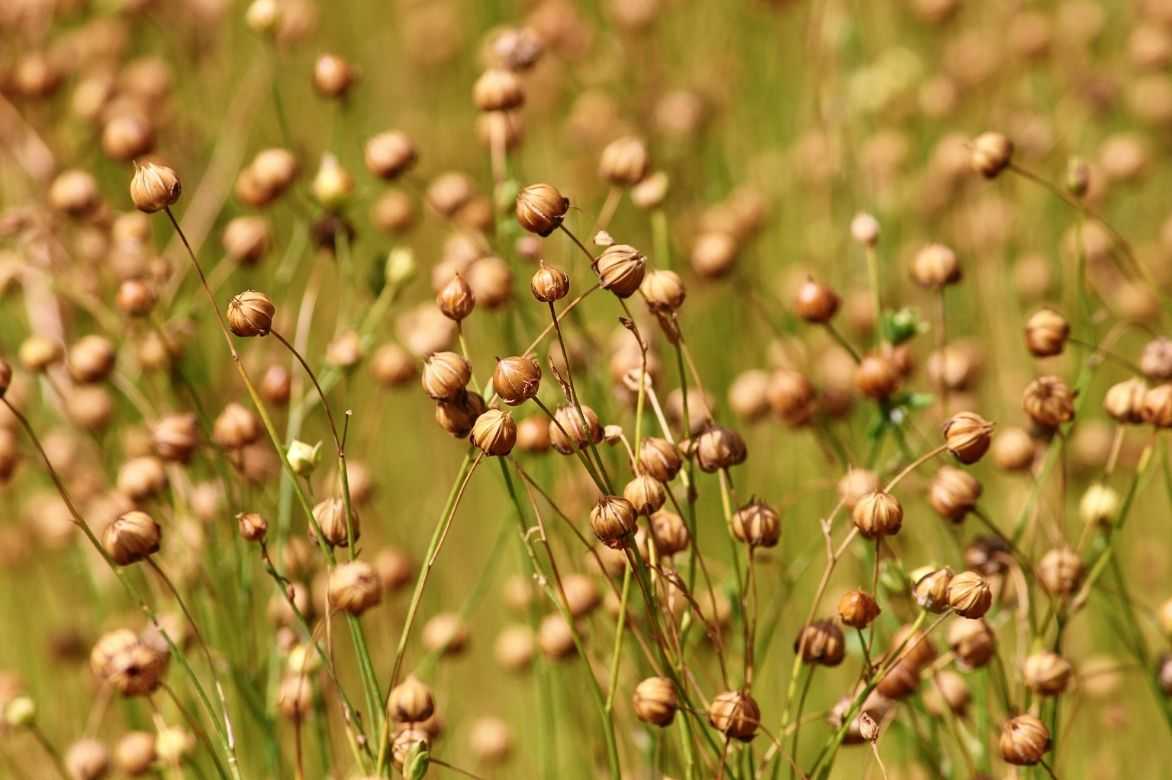
Seed capsules ready for harvest
Possible diseases and pests
Very hardy, flax is really only troubled by slugs and snails that love its young shoots: discover our tips for dealing with their attacks!
Aphids can sometimes invade it: apply sprays of soapy water to dislodge them.
In the vegetable garden: as a preventive measure, sow flax between your young potato plants to repel Colorado potato beetles, clumps of flax will form an ecological barrier.
Propagation
Annual flax multiplies easily by sowing (see ‘When and how to sow flax seeds’), perennial flax is easily propagated by cuttings.
How to take flax cuttings?
Cuttings are easy to take in spring from herbaceous stems.
- Take 10 cm-long non-flowering stem tips
- Remove lower leaves
- Plant in buckets filled with potting compost and sand
- Keep moist until rooted
- Keep cuttings sheltered and in shade
- Plant out in open ground in autumn
Companion planting flax in the garden
Flax’s graceful, airy silhouette lightens heavy perennial beds and brings a touch of naturalness to country scenes and natural areas. Planted in drifts, it can form true pastel-blue seas, yet flax is easy to combine with other annuals or perennials for well-drained soil that require the same growing conditions. It is essential in all natural, wild gardens and in sunny naturalistic prairies to which its moving, airy flowering lends lightness, charm and poetry.
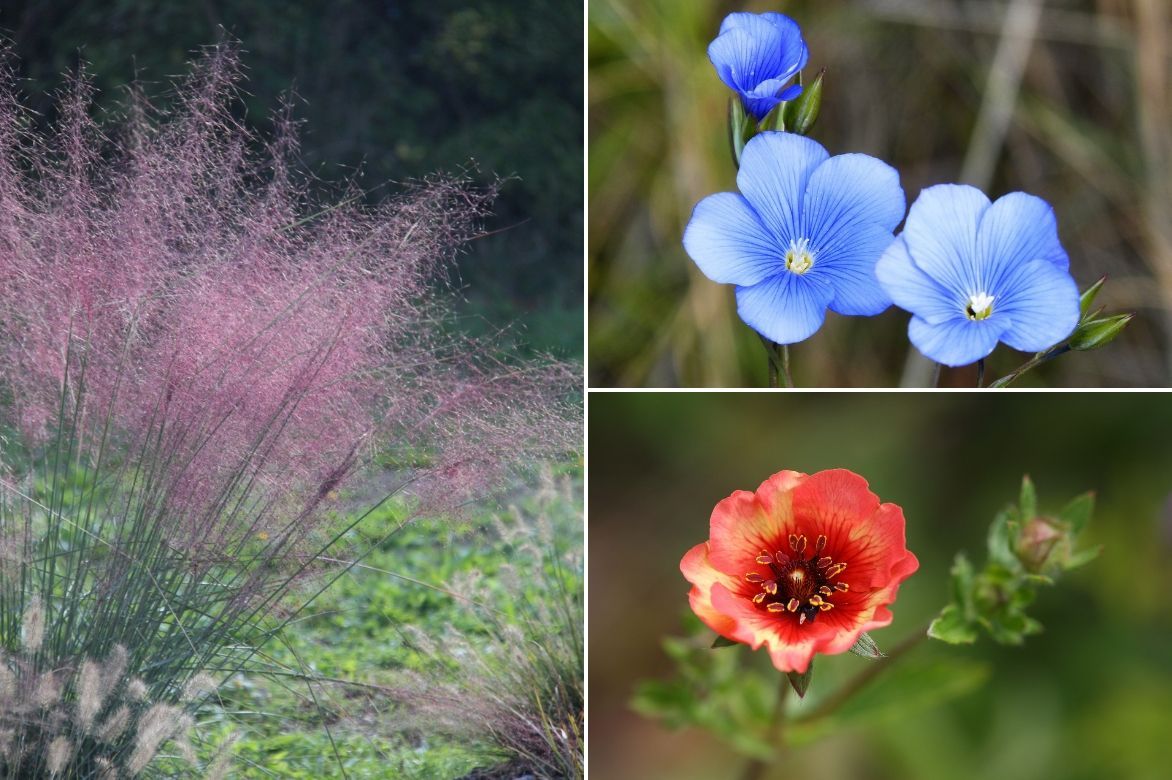
One planting idea: Muhlenbergia capillaris in the background, Linum perenne and Potentilla nepalensis ‘Miss Wilmott’, respectively in mid and foreground
Pair it in romantic pastel harmonies or in more contrasting colour schemes blue/yellow.
In a bed baked by the sun, it brings lightness beside large-flowered summer plants such as Dahlias, Echinaceas, ornamental garlic or Iris germanica with their sharp form.
Flax’s elegant foliage blends naturally with grey-green leaves of Euphorbias, Artemisias, Senecio cineraria, common sages and Phlomis.
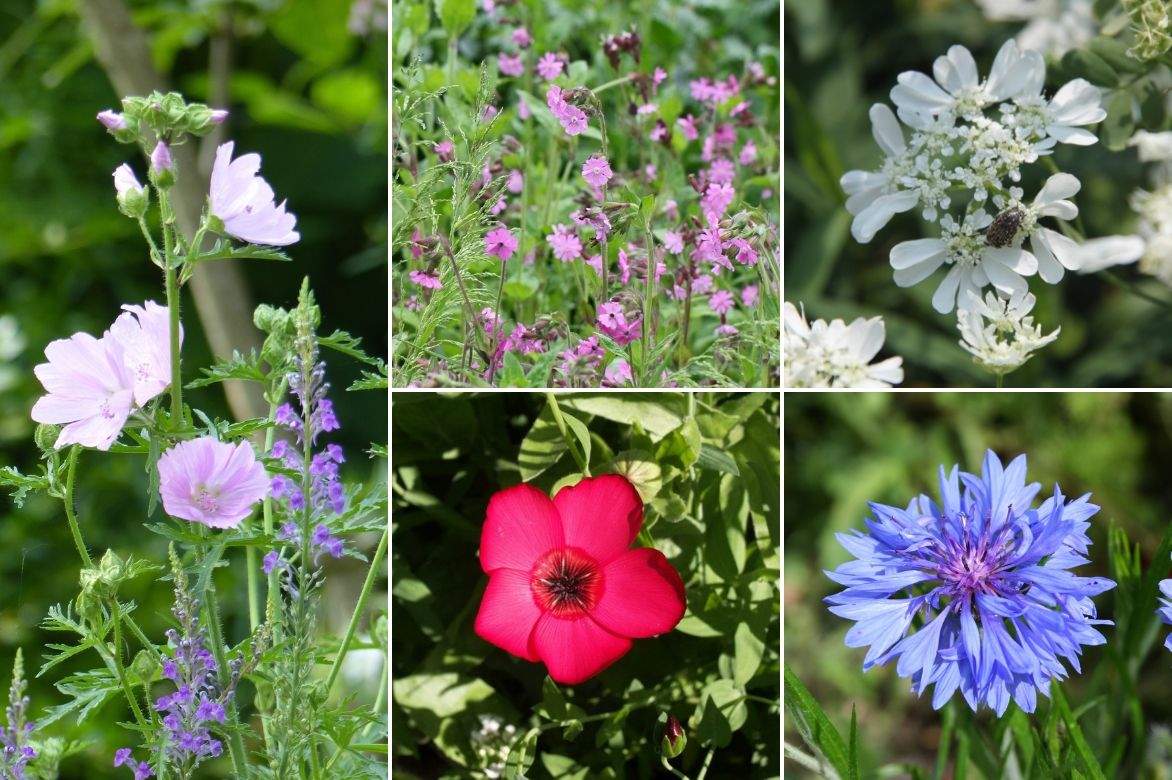
Another planting idea: Malva moschata and Linaria purpurea, Silene dioica, Orlaya grandiflora, Linum grandiflorum ‘Rubrum’ and Centaurea cyanus
Within a summer border, plant it in colourful clumps among flexible summer-flowering perennials such as Nigella damascena, gauras, nepetas, scabious, Cosmos, Ammi visnaga, veronicas and Verbena bonariensis, Achilleas, Asters.
In a flowering meadow, it mingles with Geums, centaureas, Helianthemum, and California poppies.
With great suppleness, flax will complement the swaying foliage of grasses such as Stipa pennata, Miscanthus or Pennisetum.
A few flowering clumps of flax will conceal a bare rose base for the entire season.
Useful resources
- Discover our range of flax seeds: it features the best varieties!
- Browse our article: Companion planting flax
- To get it right, check out our tutorial: Sow flax seeds
- Find the most beautiful annuals in our nursery!
- Subscribe!
- Contents
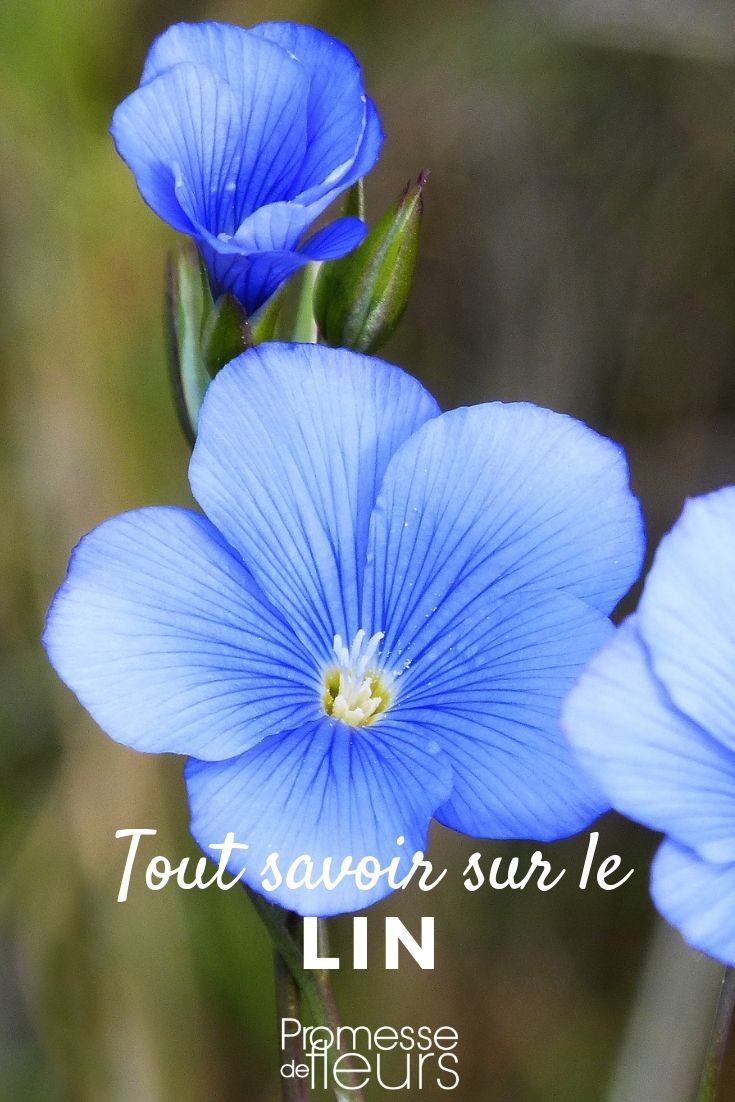
































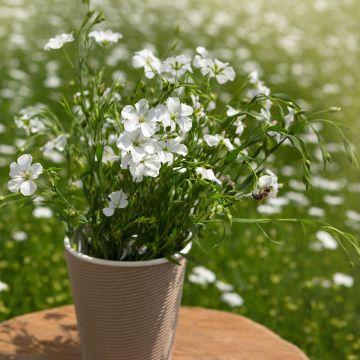
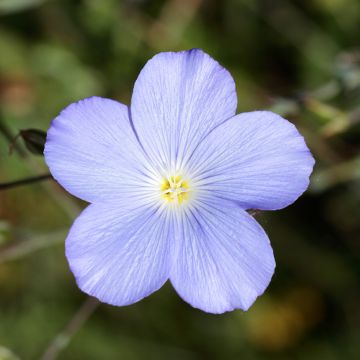
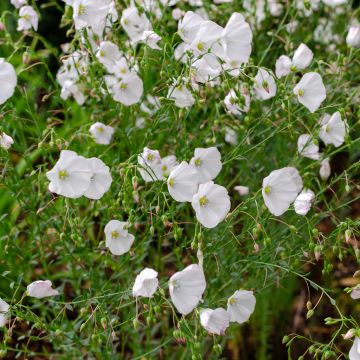
Feedbacks